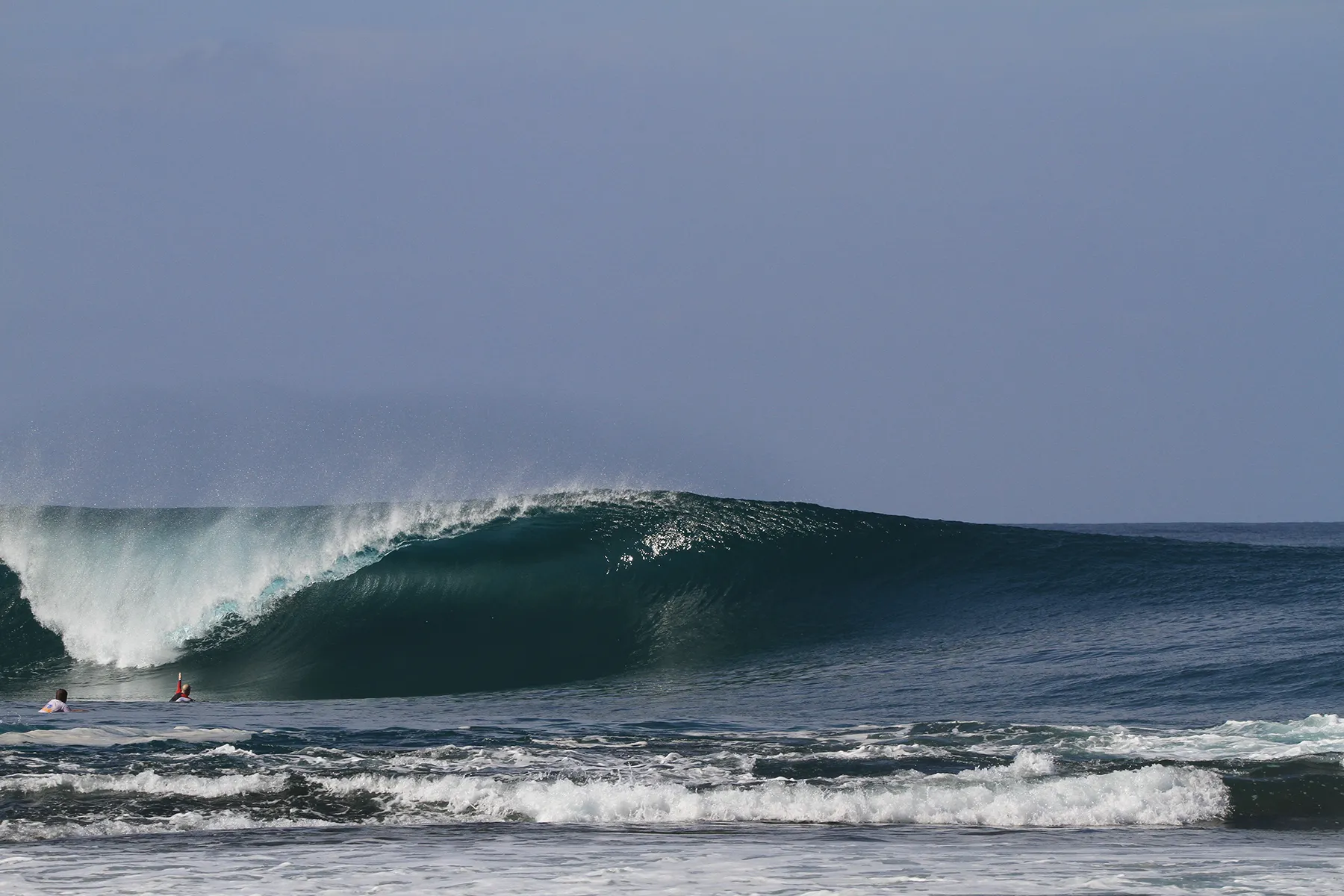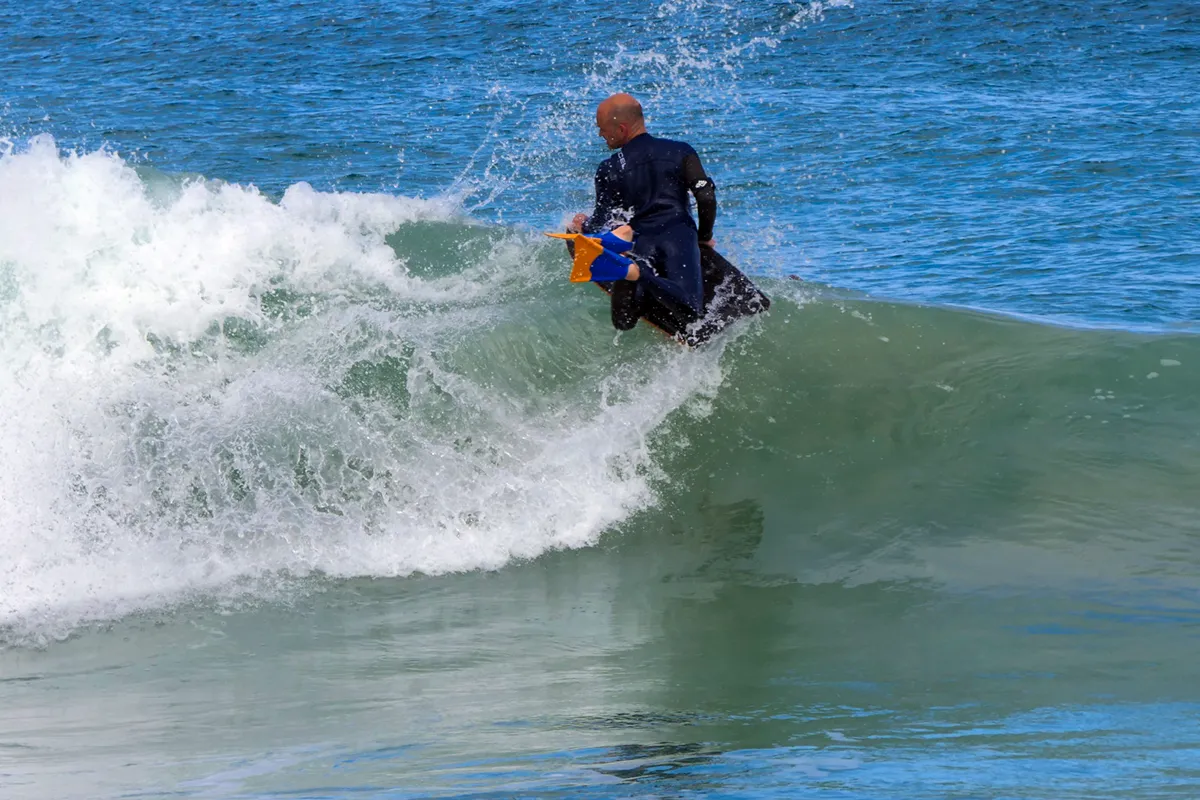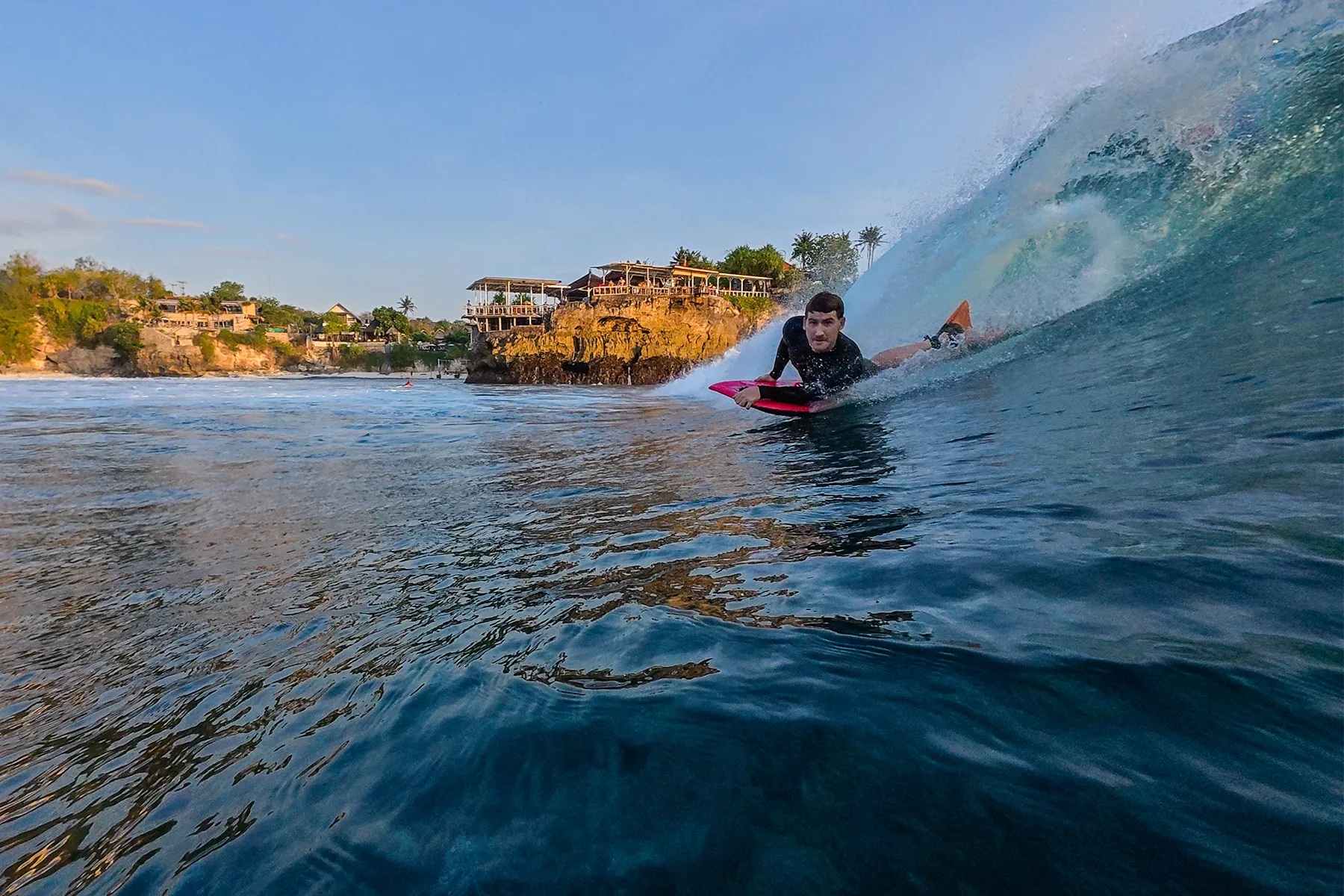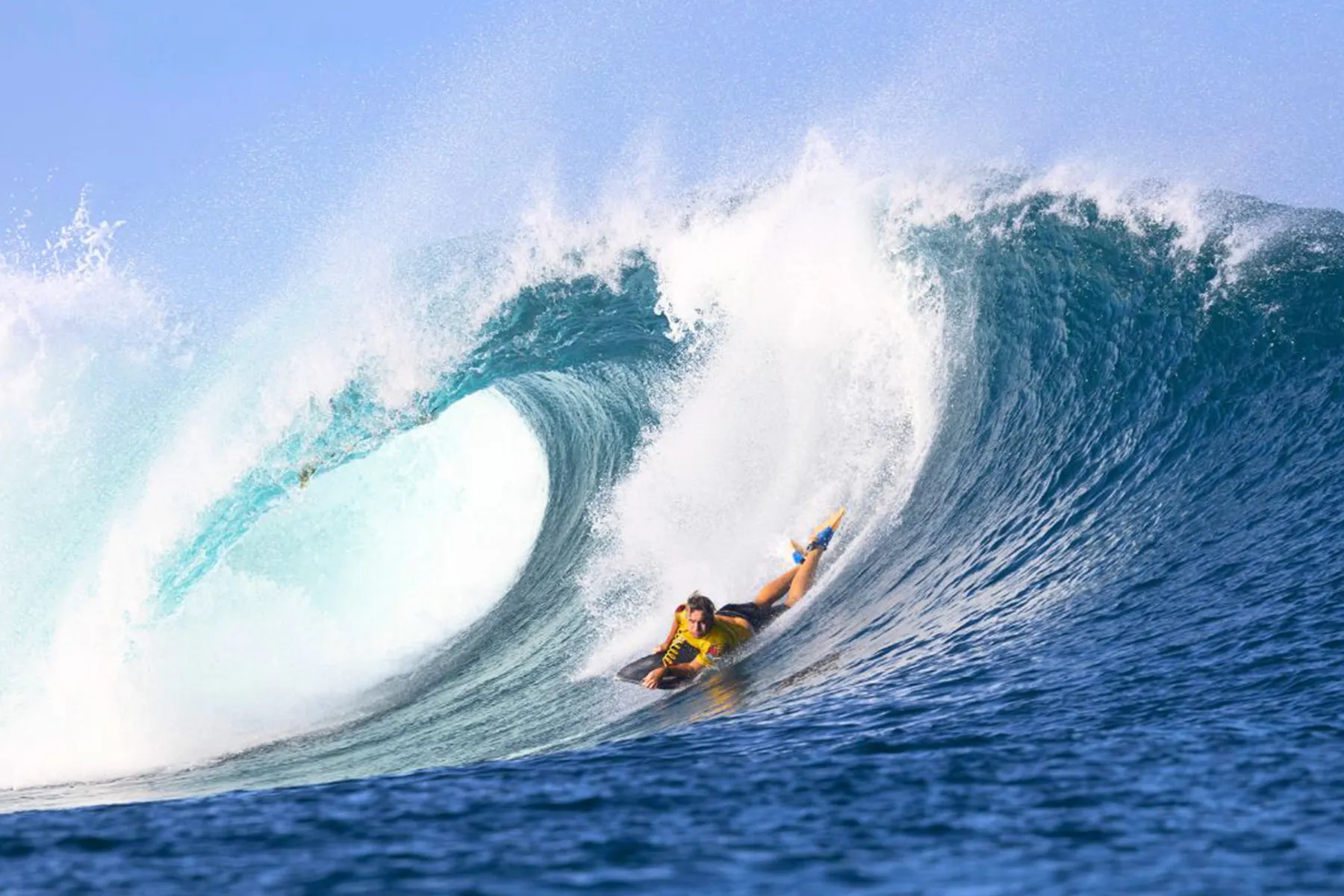understanding wave conditions
The Bodyboard Holidays team are self confessed wave geeks who like nothing more than talking about what the conditions forecast is. Where the best waves are likely to be in the coming days and why we scored such great waves on our recent trip. It’s our business to get our guests on the best waves for their ability, so we thought we’d share some of our knowledge to enhance your understanding and improve your chance of finding the best waves for your next session!
Why We Have Weather, and Waves
The sun is responsible for everything, basically. Even the solar radiation that starts the ball rolling is a type of wave; an electromagnetic wave, of course, but it’s a neat starting point for the kind of waves we’re interested in.
The short version goes like this. The sun heats the earth unevenly. The equatorial regions get the lion’s share of the energy while the poles only get a minimal amount. Hot air rises and cooler air replaces it from below – this is convection. Now add a whole range of other factors into the mix: the rotation of the earth that gives us the Coriolis force, the tilt of the earth that causes the seasons, and the distribution of oceans and continents that heat and cool at different rates. You quickly realise that the meteorology of Planet Earth is a complex beast. But the main thing is this: due to all that convection, pockets of warm air and cool air are on the move.
Pressure Zones
As low-pressure systems gyrate and travel across the world’s oceans, they generate waves. In the northern hemisphere, the arbitrary line along which the warm air from the south meets the cold air from the north is known as the polar front. Any disturbance along its length can start the formation of a low-pressure system. Warm air is less dense than cold air and slides over the top of it along the polar front. When a low-pressure system forms, this process becomes intense with air being sucked into the vortex by the Coriolis force. As the system develops, the polar front splits into individual warm and cold fronts, behind which the respective warm and cold air masses reside. Cold fronts are marked with blue triangles on pressure maps, warm fronts are marked with red semi-circles. In the warm sector between the fronts, the surface winds are strong and tend to blow for a considerable distance in the same direction. The bulk of the swell generated by a low-pressure system is generated in this area, and directed by its orientation.
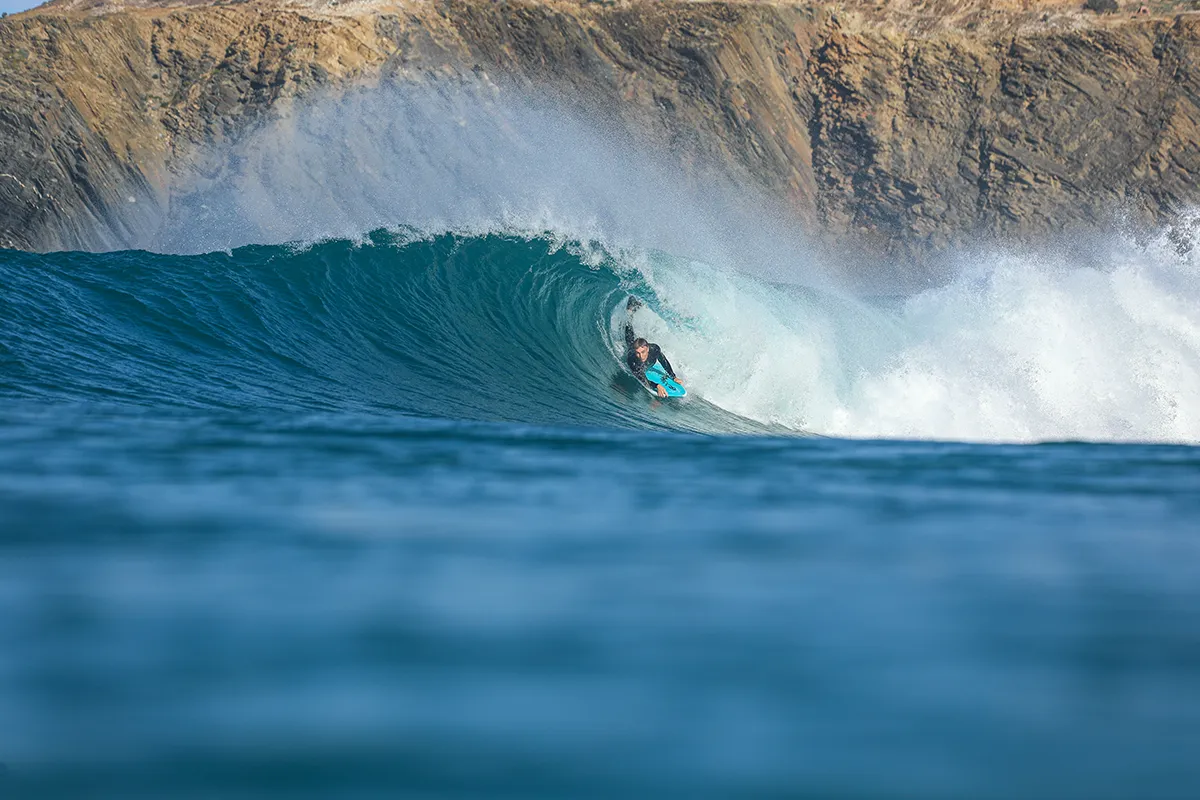
A Word About the Coriolis Force
From geography lessons at school or simply watching the weather on the internet you’ll know that low-pressure systems rotate anti-clockwise in the northern hemisphere and clockwise in the southern. This is all down to a rather complicated bit of science sussed out back in the day by French physicist Gustave-Gaspard Coriolis. It relates to the relative speed of different points on the earth’s surface as the planet spins. As the earth makes its daily rotation, a point at the equator is moving faster and travelling further than a point at higher latitude. A point at the poles would not be travelling at all, just spinning. In the northern hemisphere, any air mass traversing over the spinning globe is always forced to turn right.
It’s this that makes the pressure systems spin in the direction that they do. Familiarising yourself with the use of Surf forecast apps such as Surfline saves you needing to train as a weather scientist to establish what the waves are going to be like at your local beach!
"I take the role of chief conditions forecaster with Bodyboard Holidays and there is a lot of pressure to get the predictions right. Most of the time I'm happy to say that our methodology pays off and our clients benefit from our collective knowledge"
Matt Hawken - Bodyboard Holidays Staff Team Member
So How Exactly Do Waves Form?
Waves are the result of friction between the atmosphere and the ocean. A zephyrous breeze under two knots will generate tiny ‘capillary waves’, but if the wind dies they die also, thanks to the surface tension of the water. A breeze over two knots, sustained for any length of time, will generate proper waves which are known as ‘gravity waves’. At first these are just ripples, but as the wind pushes against the backs of the ripples they grow to become ‘chop’ then a ‘sea’. The bigger the waves, the easier it is for the wind to transfer its energy to the waves (up to a certain point).
For wind waves to become swell there are three vital factors in the equation: the strength of the wind, the length of time it blows, and the distance of the ocean it blows across (the fetch). If you’ve ever seen one-foot-high waves in a lake you’ll know that you don’t need a vast tract of ocean for waves to develop. Most models suggest that even the biggest swells ever seen can be generated with less than a thousand miles of fetch.
Next time you look online at a weather forecast, try to pick out the warm sector between the fronts pointing towards your location; this is the fetch that generates your waves
The Next Stage
Swell – the clean, defined waves that we crave as bodyboarders – are waves that have escaped the storm that made them. The confused sea transforms itself into organised lines as the energy matures and consolidates into longer, faster waves. These swell trains can travel great distances, often thousands of miles. A wave born in the Southern Ocean off Antarctica can traverse the whole of the Pacific and end its days on a beach in Alaska.
Each ocean is a different size and shape, with its own unique weather patterns. The Atlantic is much smaller than the Pacific so surfers in northern parts of Europe are rarely blessed with the clean, long period waves that regularly grace the coasts of Central America (that’s why we pack up and head over to Costa Rica and El Salvador every winter). But if a low is slow moving and the waves have a chance to beat the storm to shore, then even windswept countries like the UK, Ireland and Norway can score quality surf.
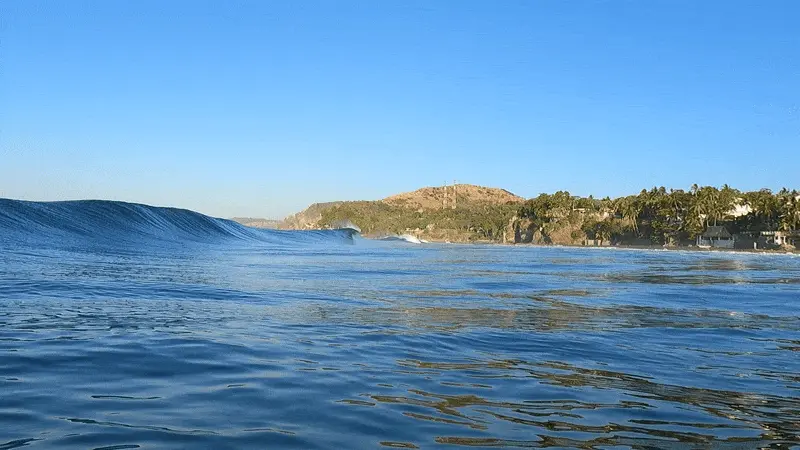
How Perfect Waves Are Formed
So, we’ve got to a point in the story where a clean lined-up swell is making a beeline for our coast. It’s the interaction between the swell and the landmass that determines whether the waves are of any use to us as bodyboarders.
As a wave approaches the coast it ‘feels’ the bottom when the depth becomes less than half the wavelength. This may cause refraction, where the wave bends along its length around a headland, reef or point. Examples of refraction can be found at classic, secret pointbreaks like those that we find on our Secret Morocco trip.
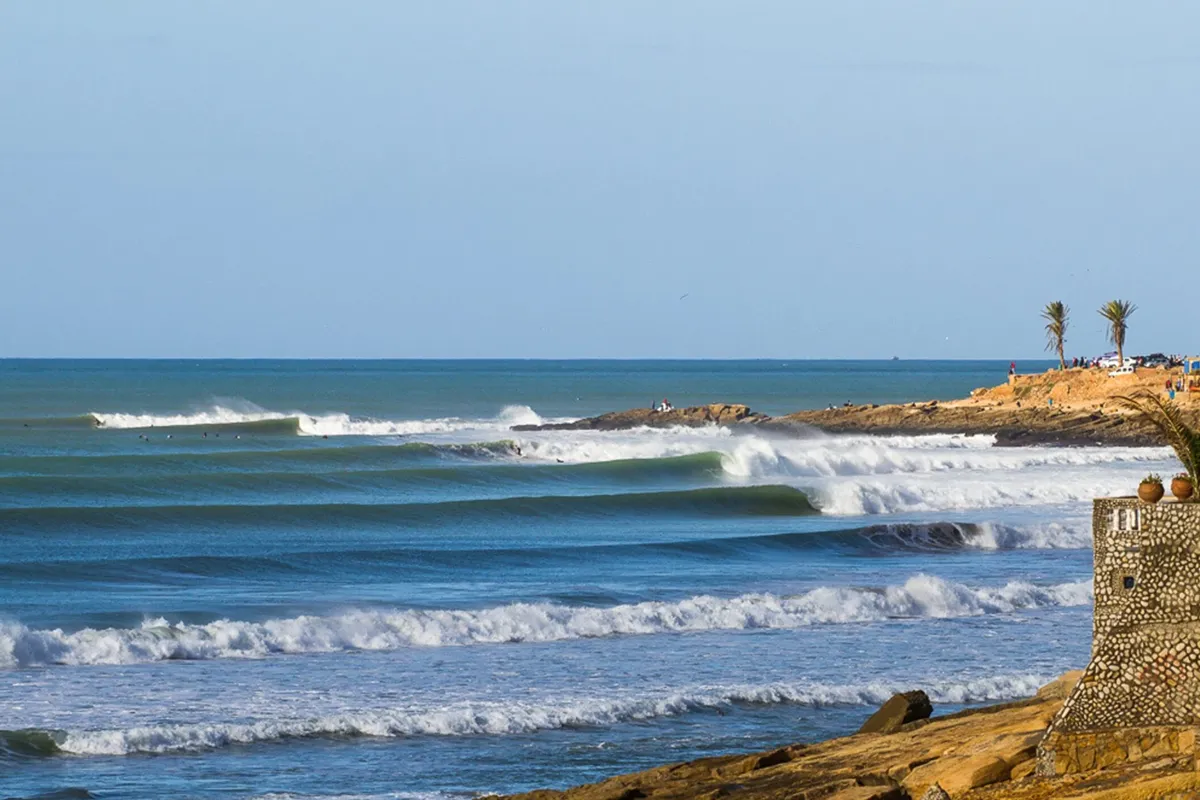
A more subtle example of the phenomenon occurs in Costa Rica, where incoming waves refract along the edges of an offshore ocean trench and the size of the resultant breaking waves is amplified.
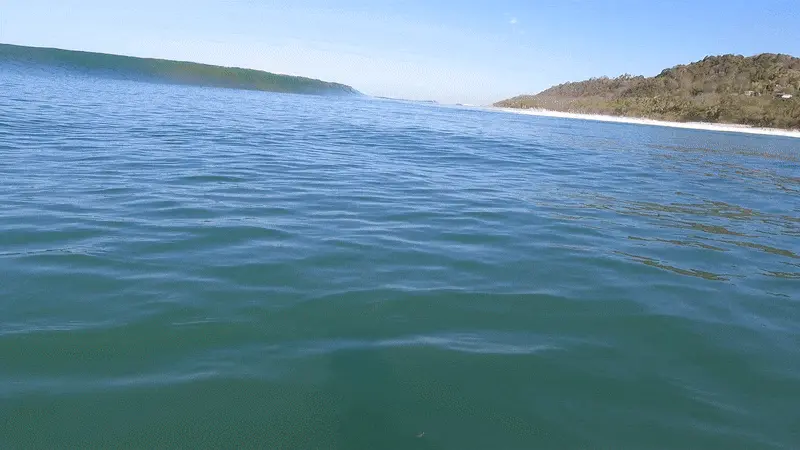
How a Wave Breaks Depends on the Local Geography
Any wave will eventually break when it hits the shallows and the water depth is 1.3 times its height. So a six foot wave will break in eight feet of water, approximately.
Depending on the bottom contours of the shore you can get what are known as surging, spilling or plunging breakers. Surging waves are of no use to us as bodyboarders. Spilling waves can be found on gently sloping beaches and are perfect for beginners. It’s these types of waves that we find at the Newquay Bay beaches and we enjoy with the entry level riders during our bodyboard coaching weekends. We also have waves to suit riders who enjoy mellow waves on trips to Costa Rica, El Salvador, Portugal and beyond
Plunging breakers are the classic hollow waves favoured by advanced bodyboarders, and plunging breakers that peel (rather than close out) are the ultimate type of waves that bodyboarders seek. Various kinds of setup will do the trick:
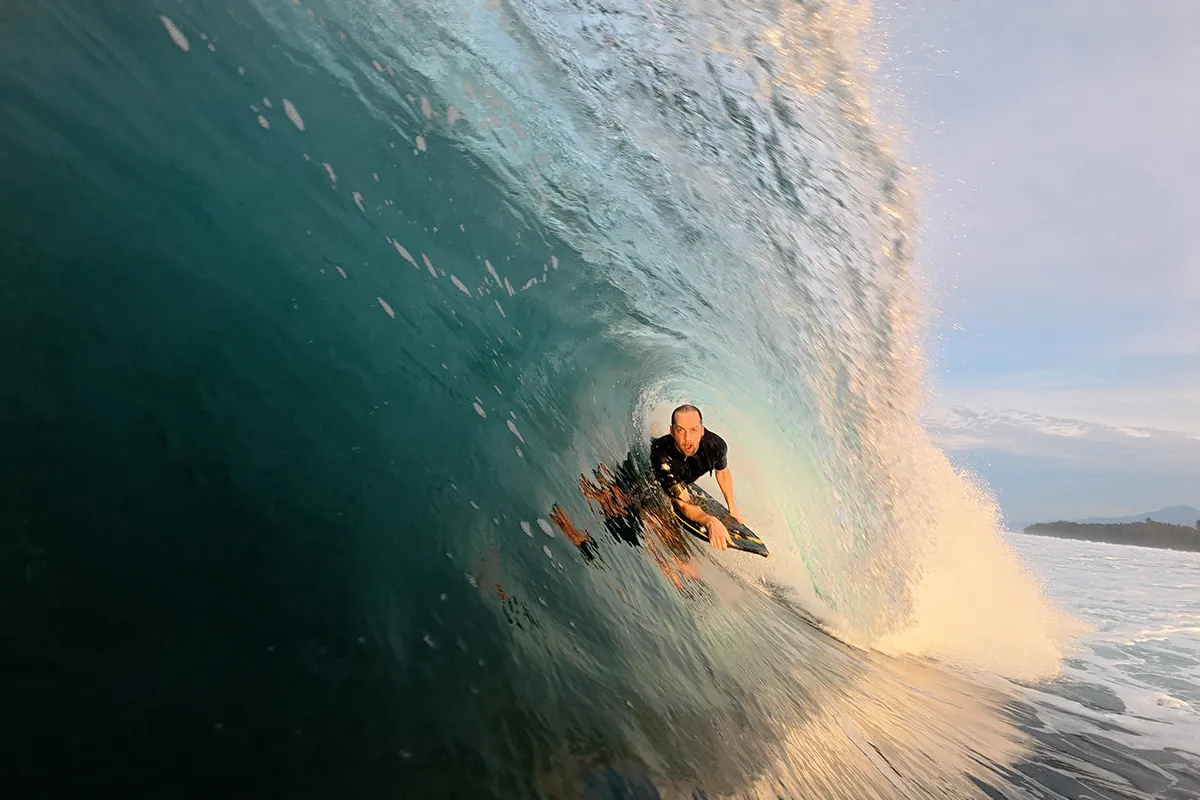
Reef passes (As seen here on our Sumatra trip)
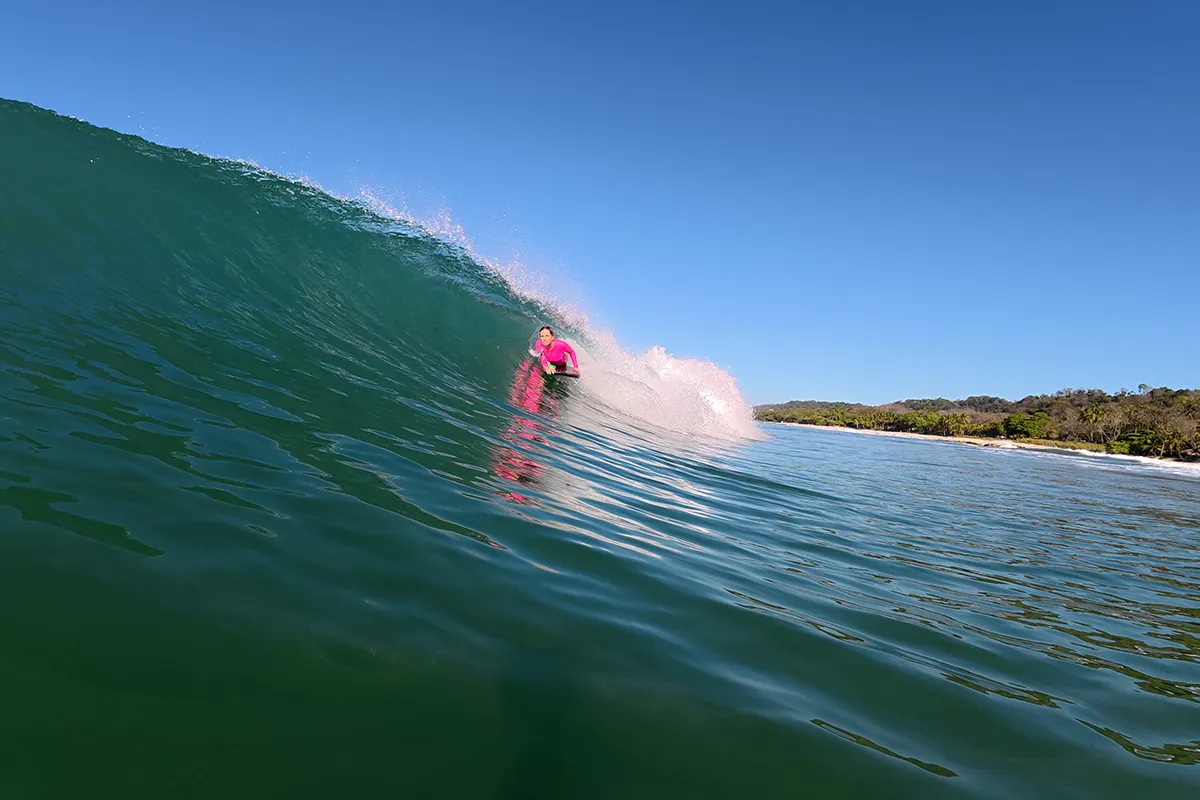
Rivermouths (Costa Rica)
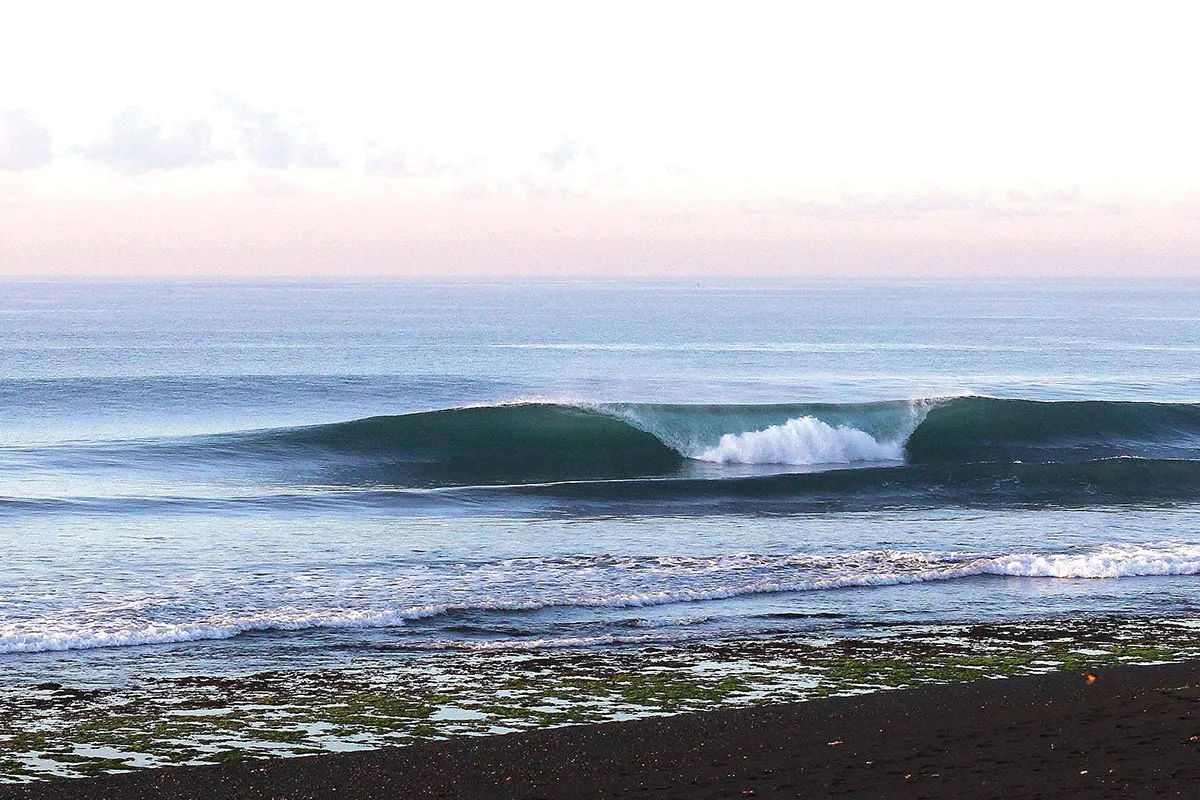
Reefs (Bali)
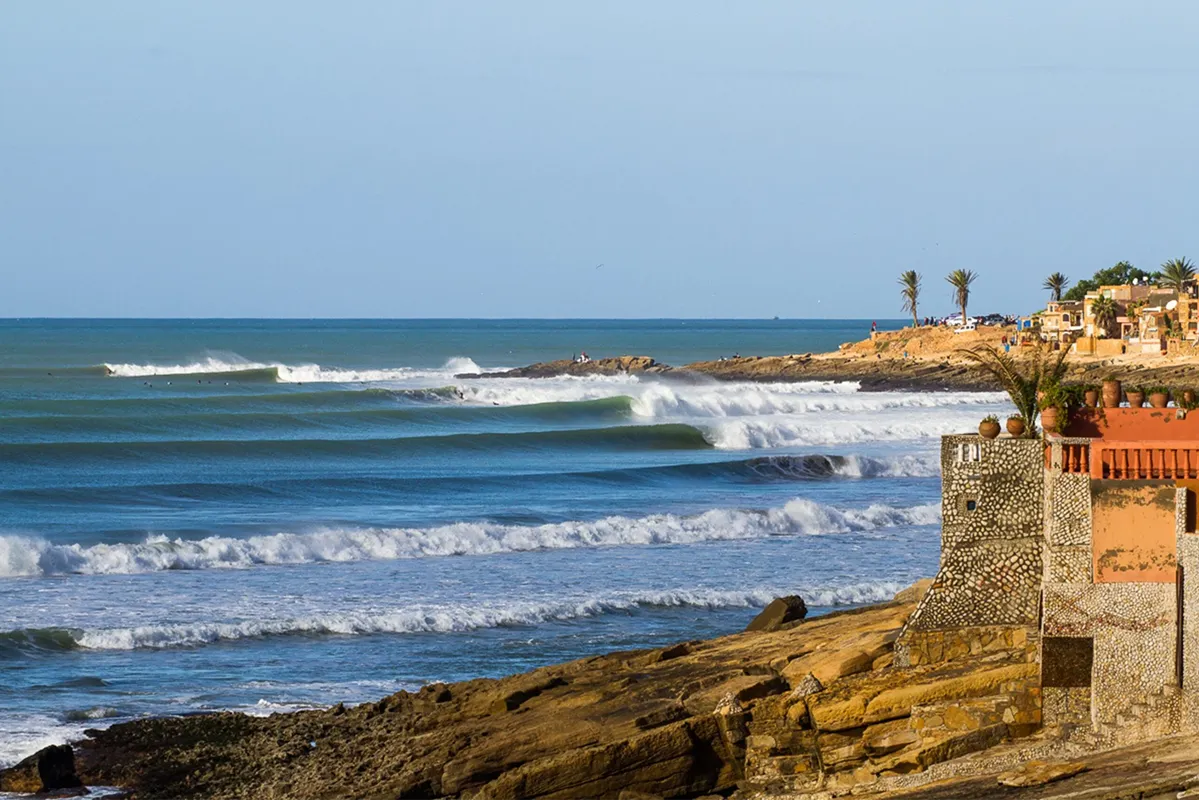
Point breaks (Secret Morocco) Photo: Saltshots
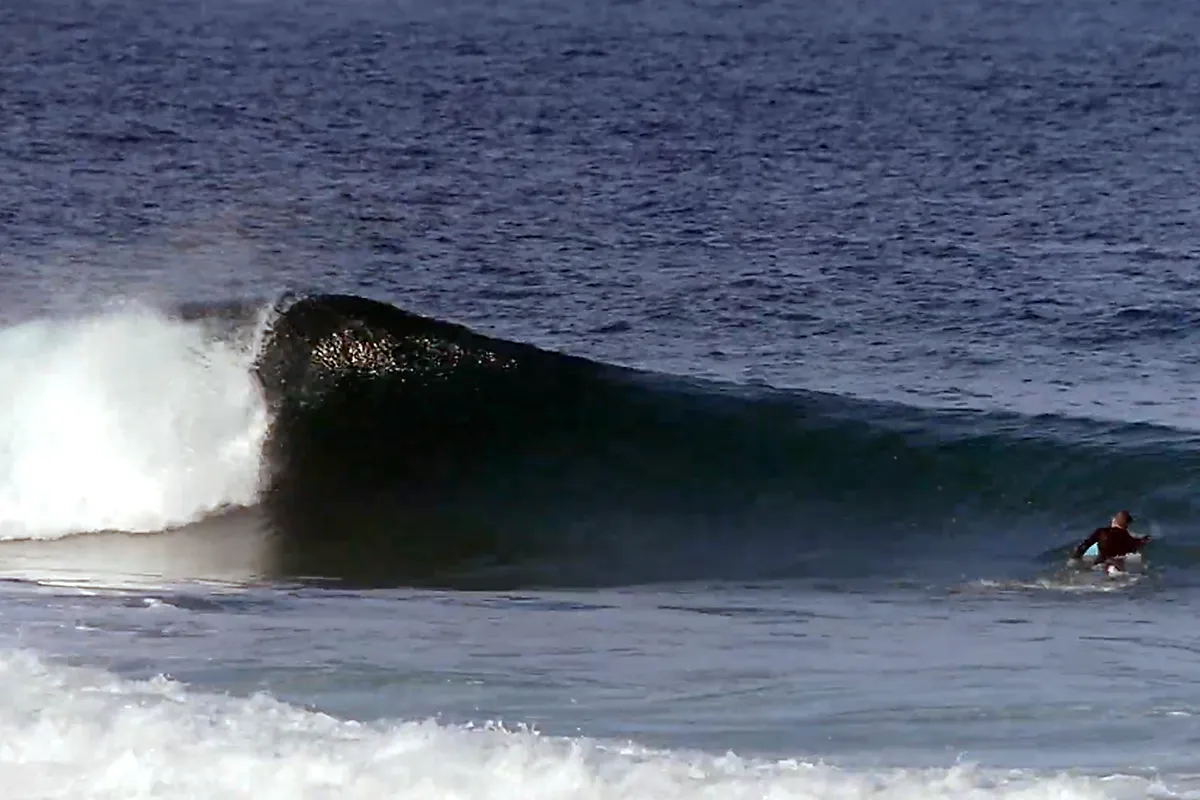
Well-formed beach sandbars (Portugal)
The wind direction is another factor that affects the shape of a wave, as we all know. Offshore winds hold up waves and enhance their shape, while strong onshore winds trash them.
Finally, What About Some Numbers?
The solar energy which has been converted into wind energy and then into wave energy is finally unleashed when a wave breaks. Oceanographers reckon the pressure exerted by a breaking wave varies from 250 to 6,000 lbs per sq foot (30 to 800 kgs per sq metre), depending on the size of the wave. Which is why it feels like you’ve been hit by a truck when a large wave lands on your head at a heavy reef break. Another numerical fact, slightly easier to remember, is that a cubic metre of water weighs one metric tonne. Think about that next time you’re looking at a photo of triple overhead wave and considering whether to paddle out or not!
Ultimately, wave selection becomes a really important part of having a great surf session, so watch this video to help to upskill you further.
The team at Bodyboard Holidays prides itself in having our guests in the right place at the right time for the best waves for their ability. We pride ourselves in maximising safe, fun sessions in the ocean. Check out our reviews here!
If you’d like to join us for a Bodyboarding trip of a lifetime, choose your location from the options below!
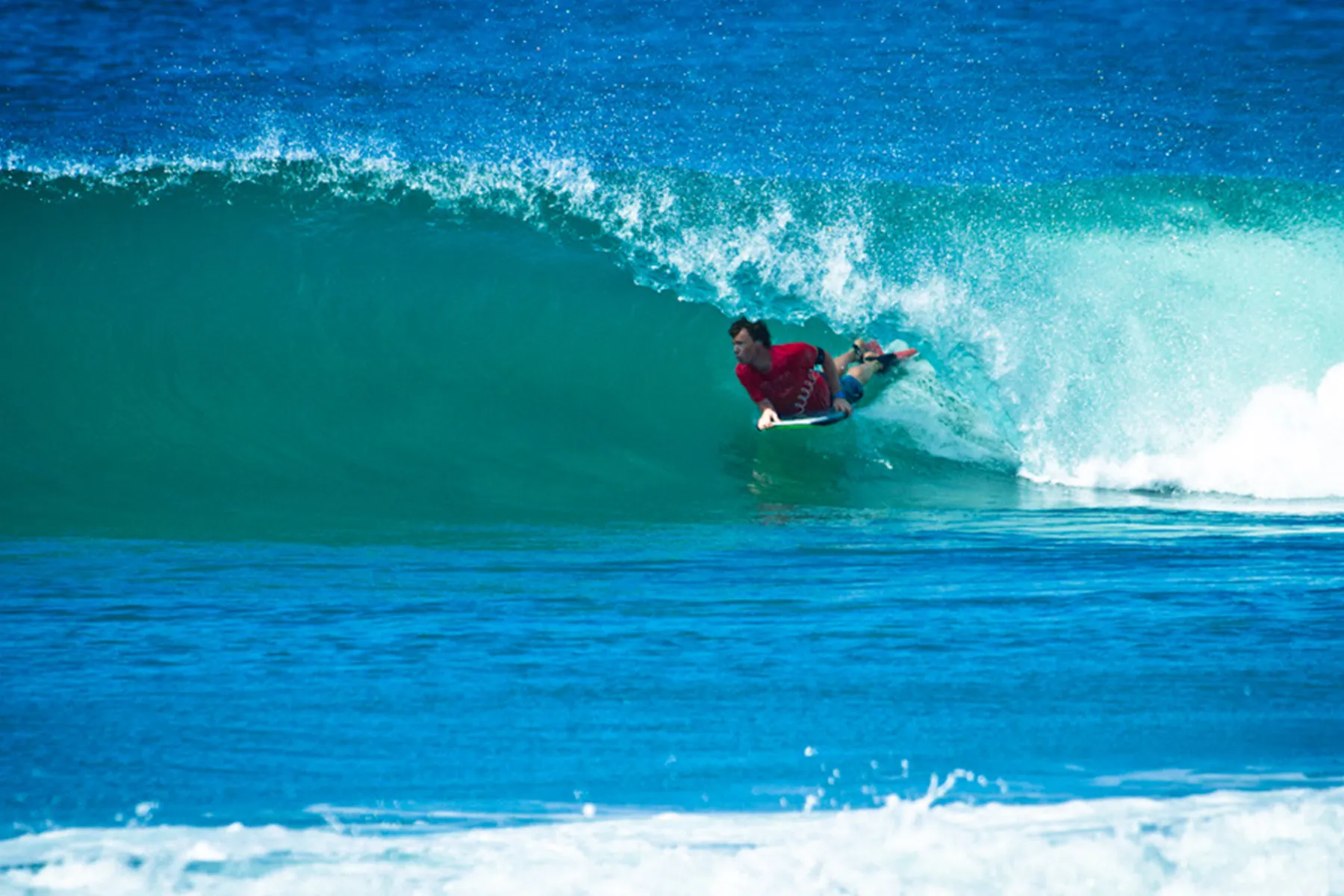
Costa Rica Bodyboard Camp
From:

Newquay Bodyboard Weekends
From:
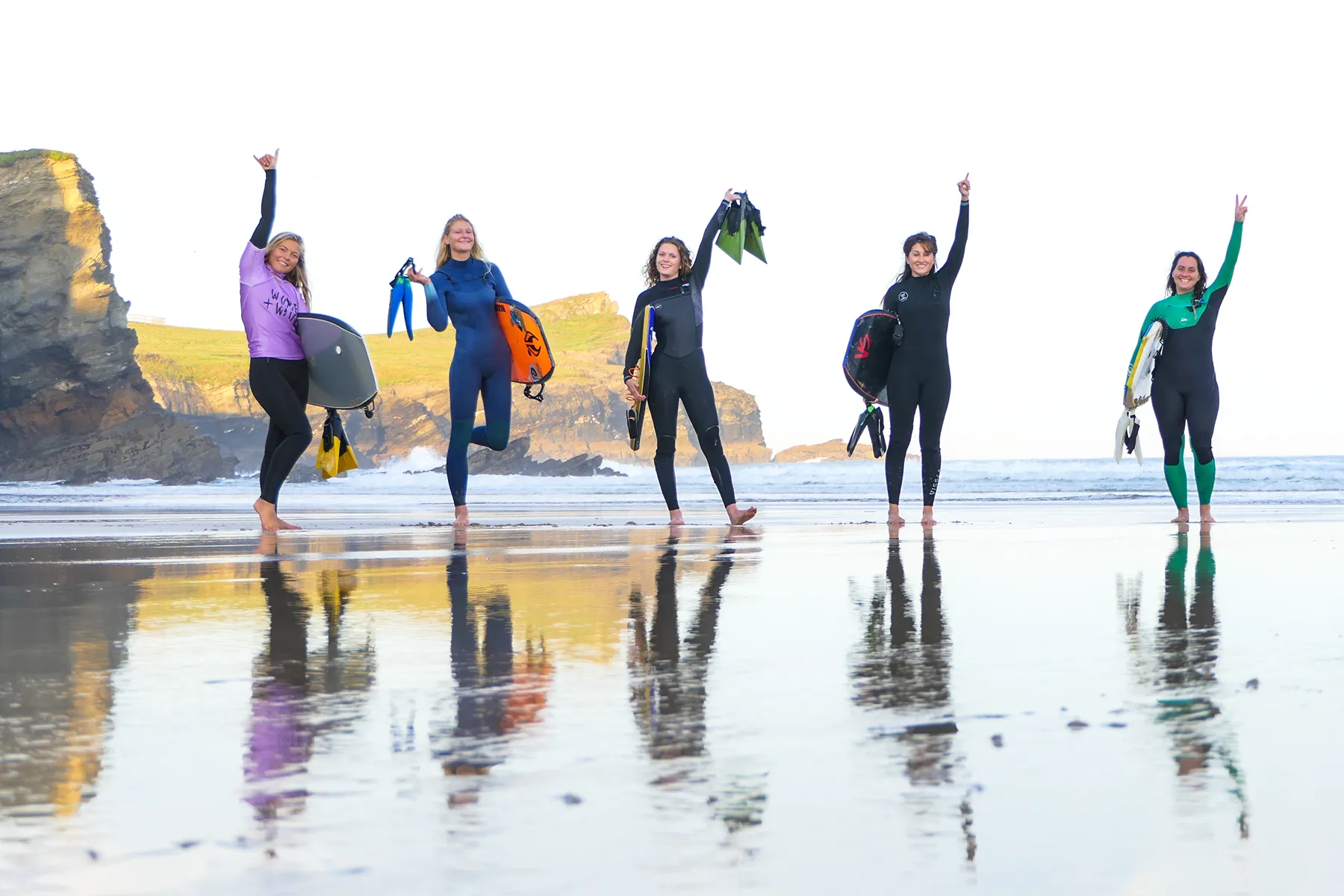
Ladies Bodyboard Weekends
From:
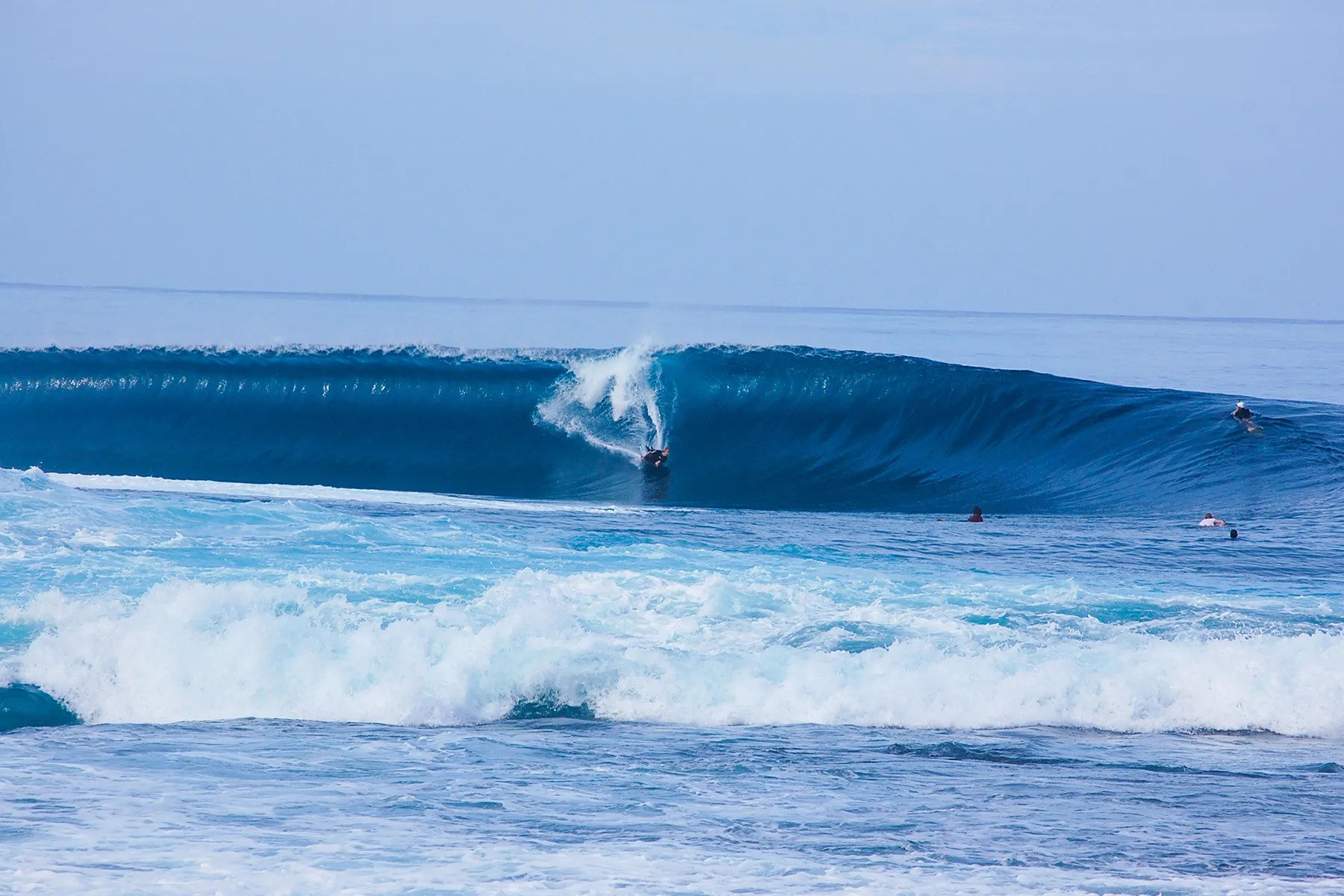
Southern Sumatra
From:
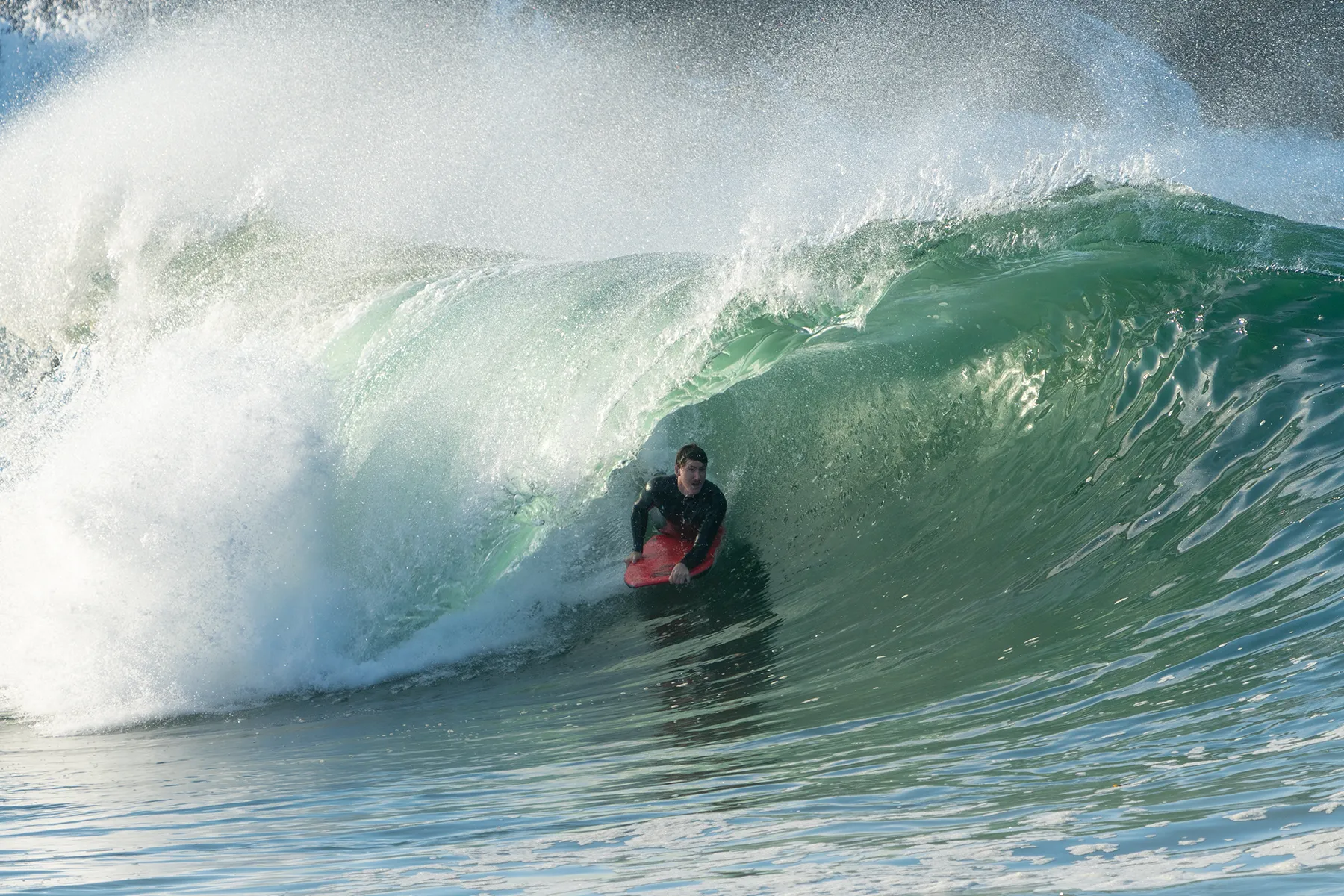
Iain Campbell Weekends
From:
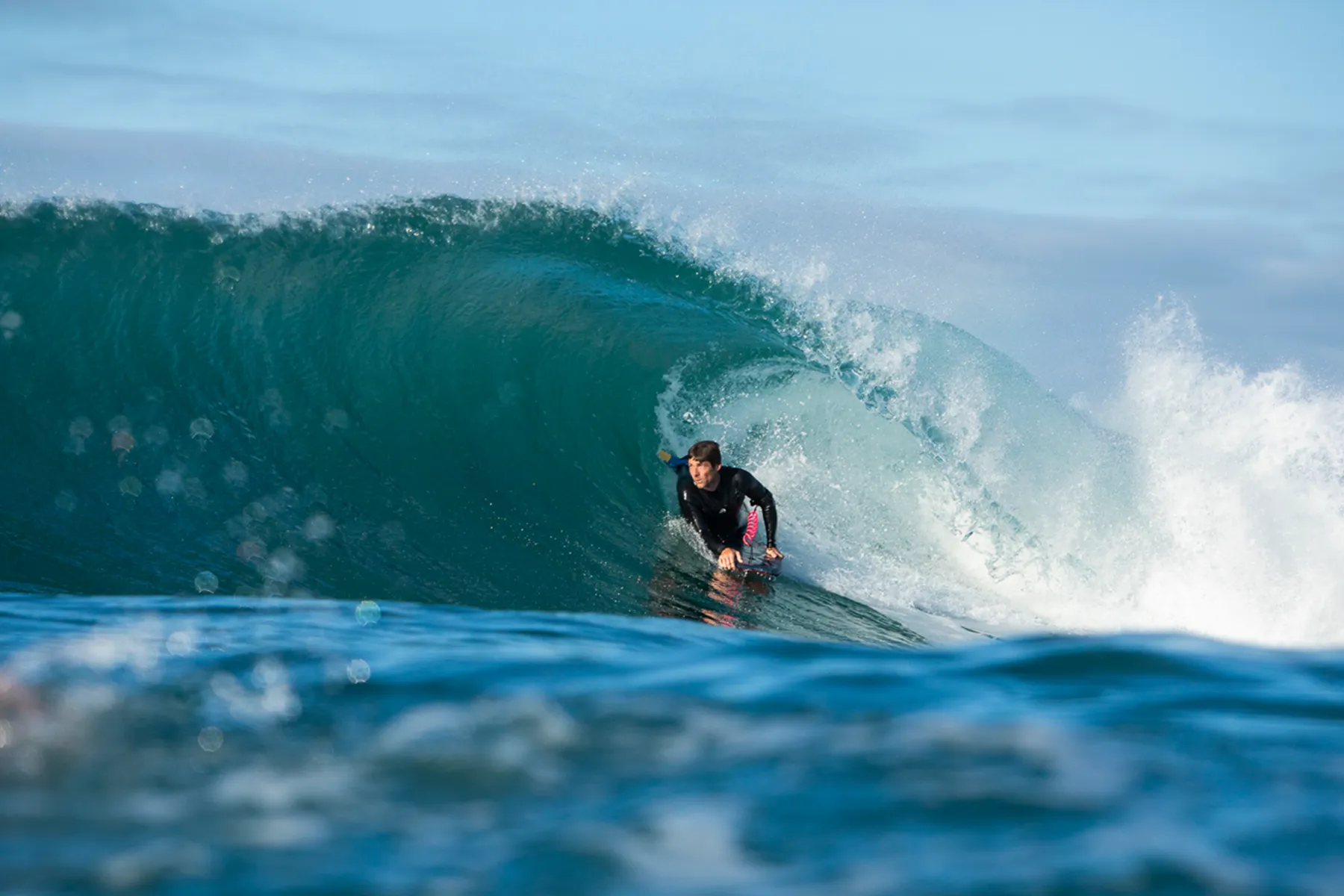
Bristol Bodyboarders Club Weekend
From:
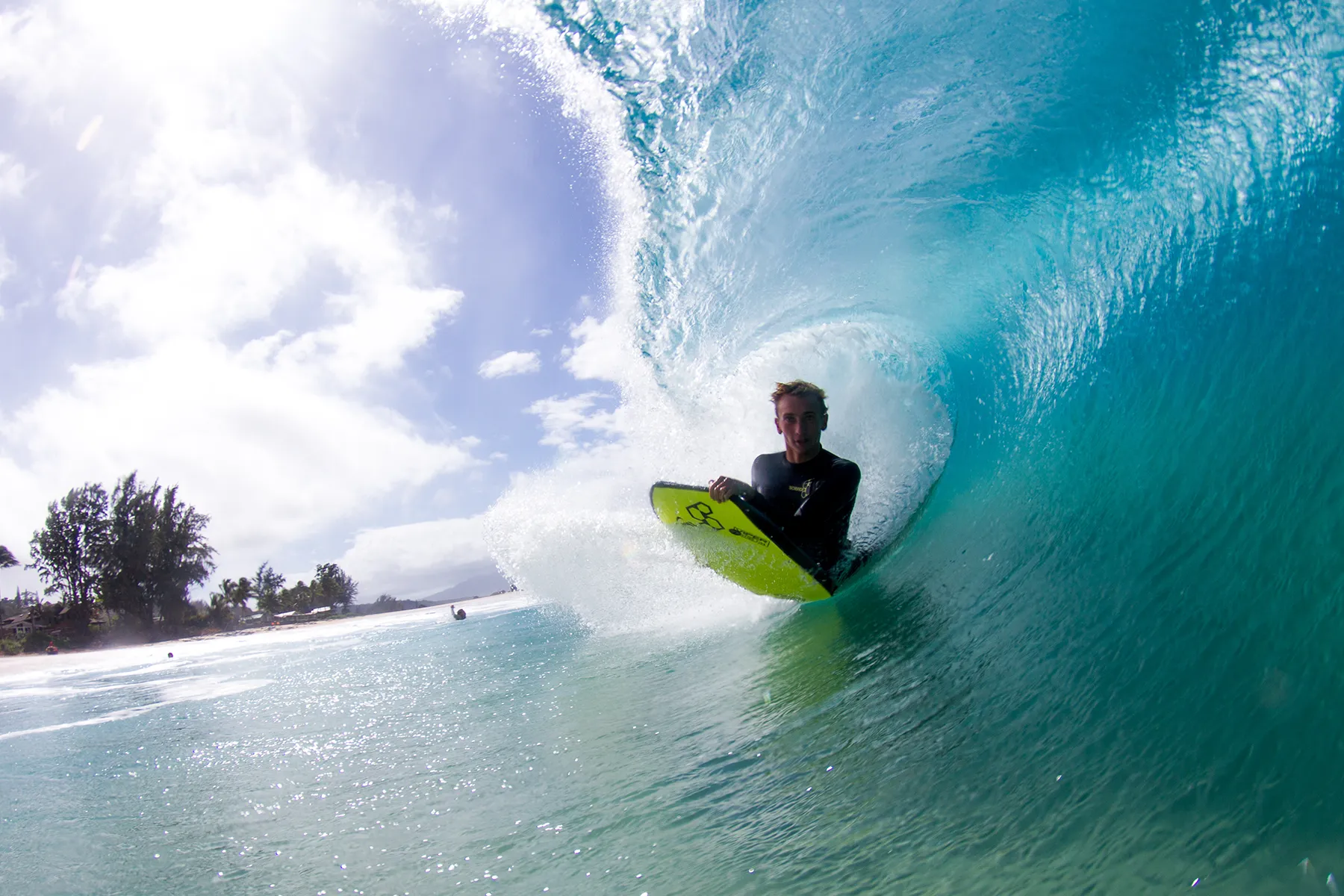
Science Bodyboards Sponsored
From:
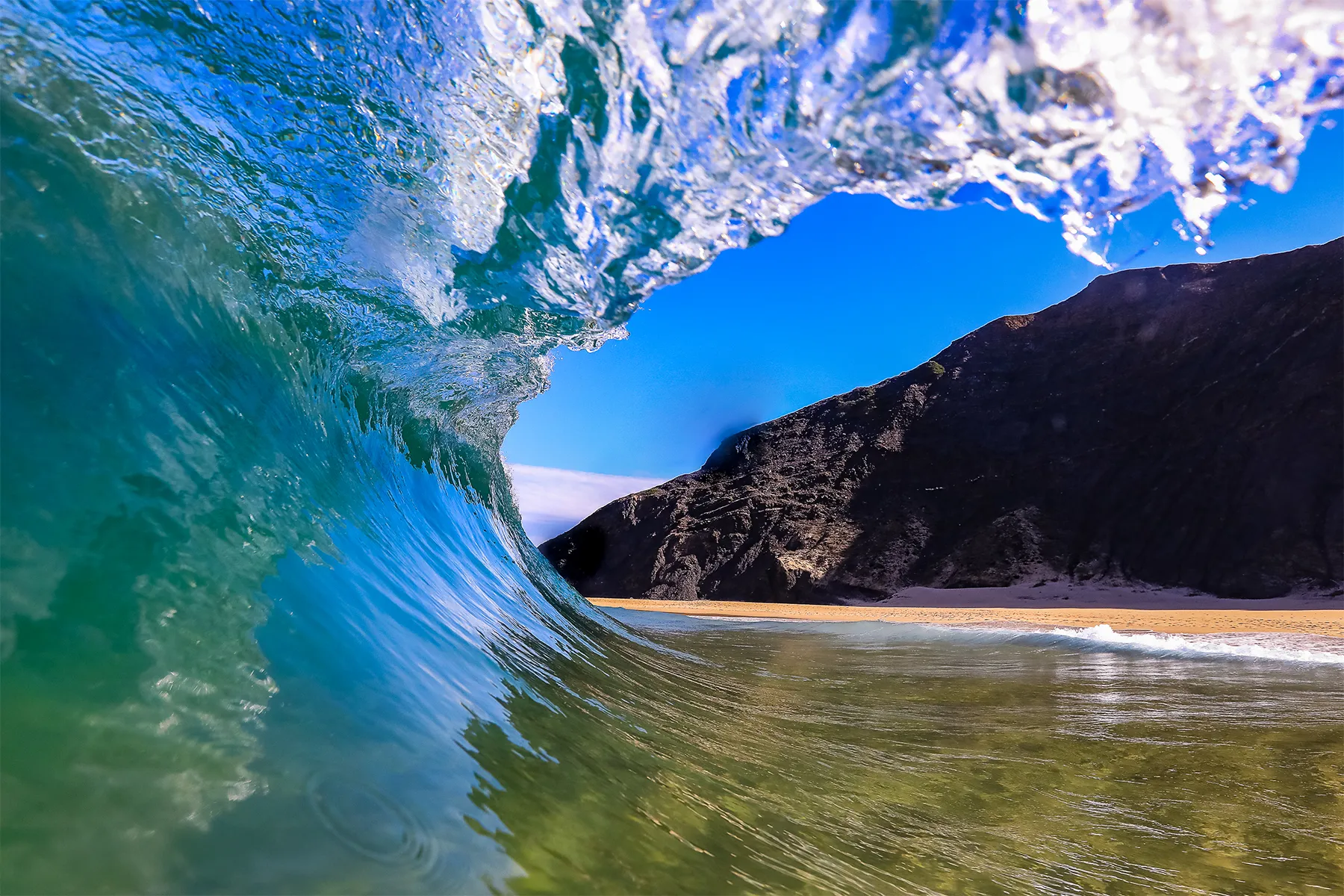
Portugal Bodyboarding Holiday
From:
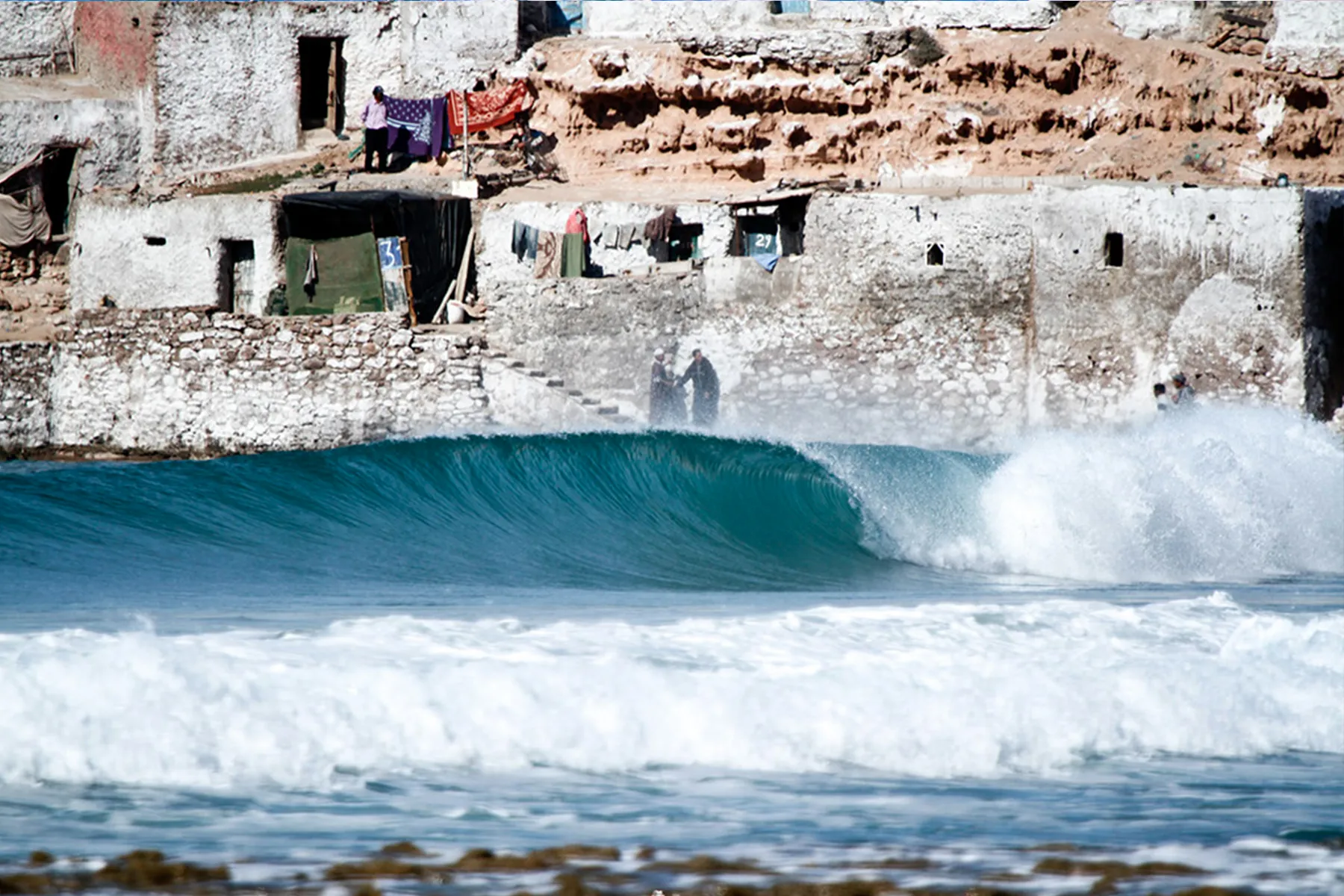
Secret Morocco Bodyboarding Adventure
From:
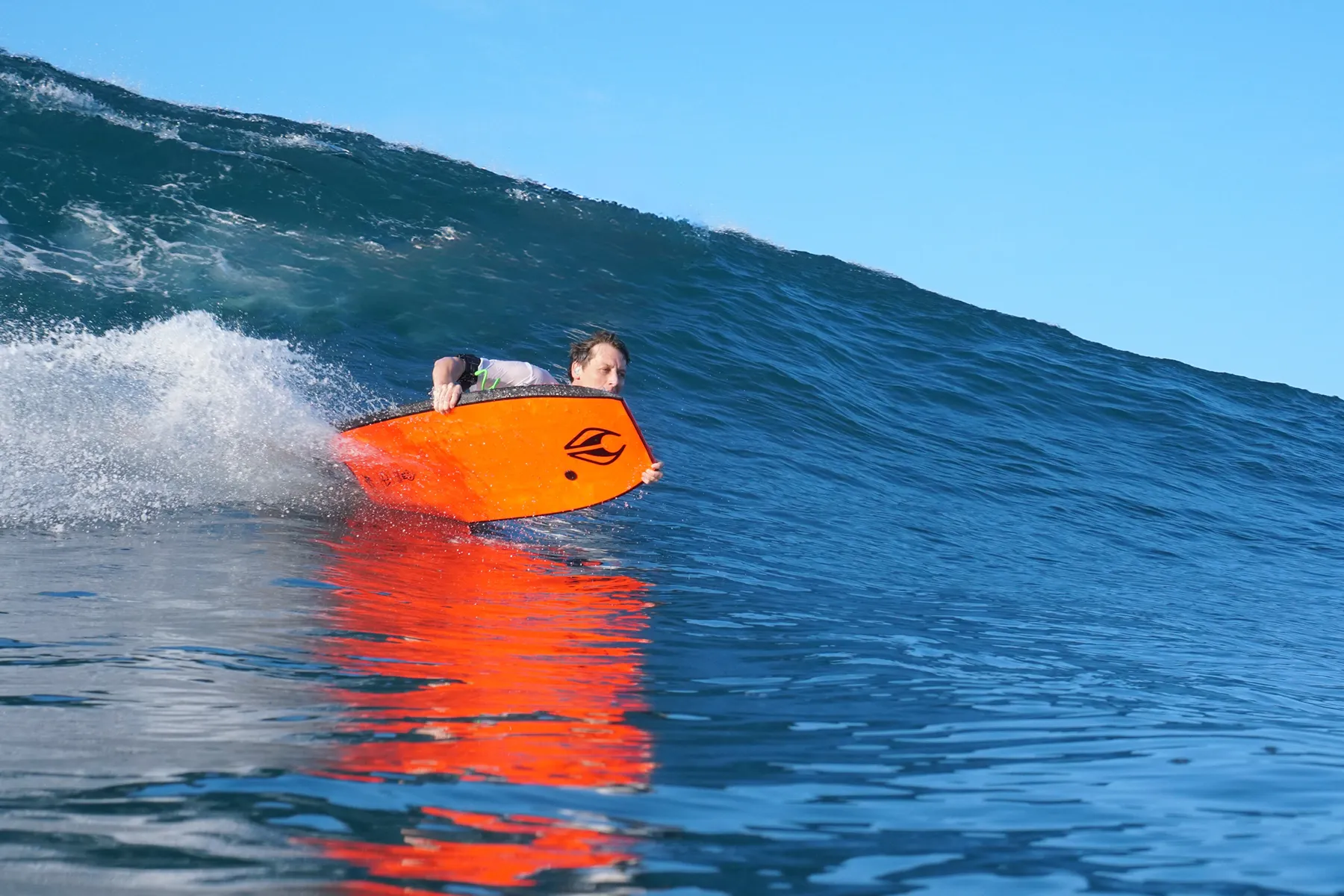
NMD Board Co Sponsored
From:
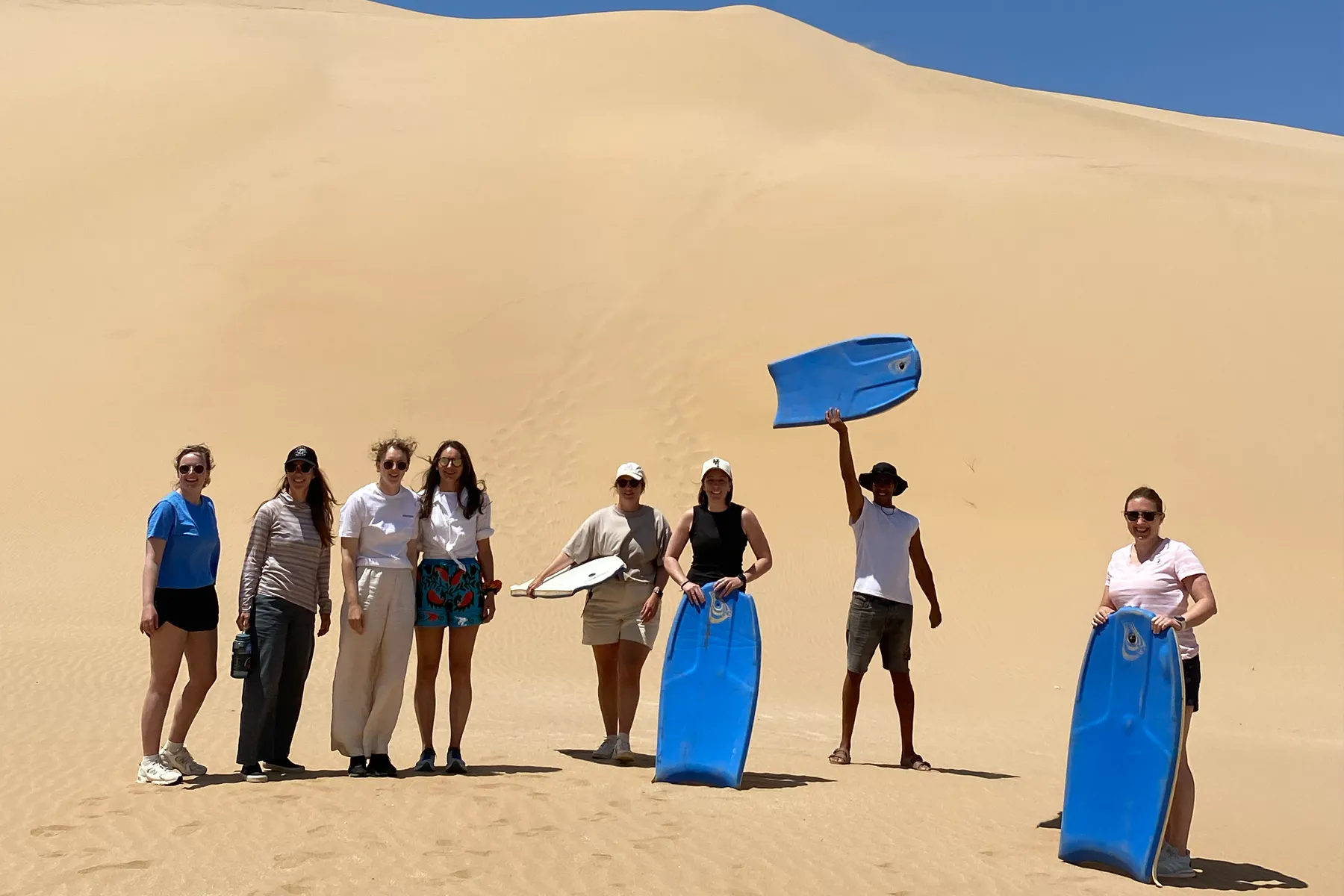
Women's Bodyboard Retreat
From:

Costa Rica & El Salvador
From:
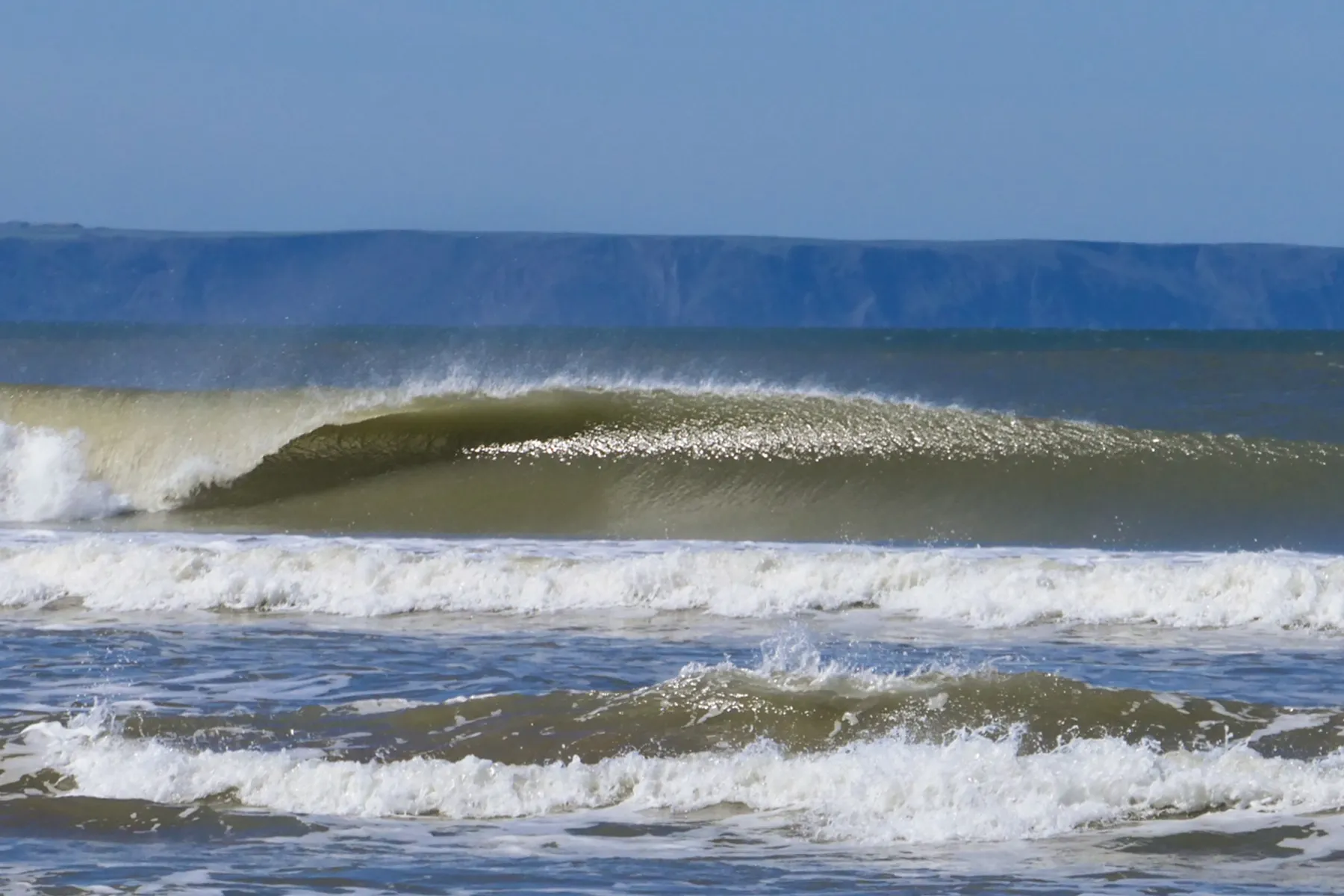
Croyde Bodyboard Weekends
From:

El Salvador Bodyboarding
From:
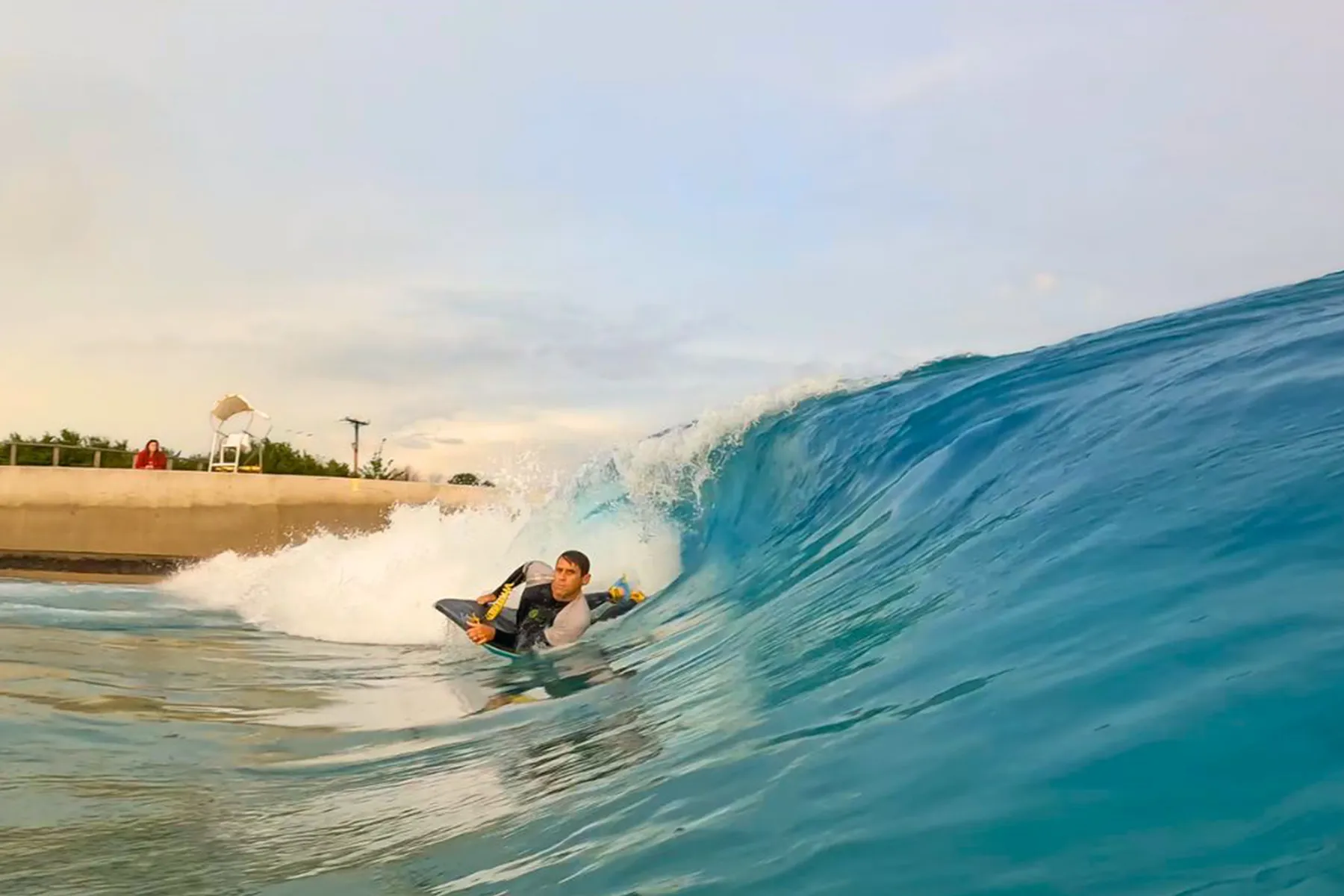
The Wave Coaching Day
From:

Bodyboarding Bali Adventure
From:
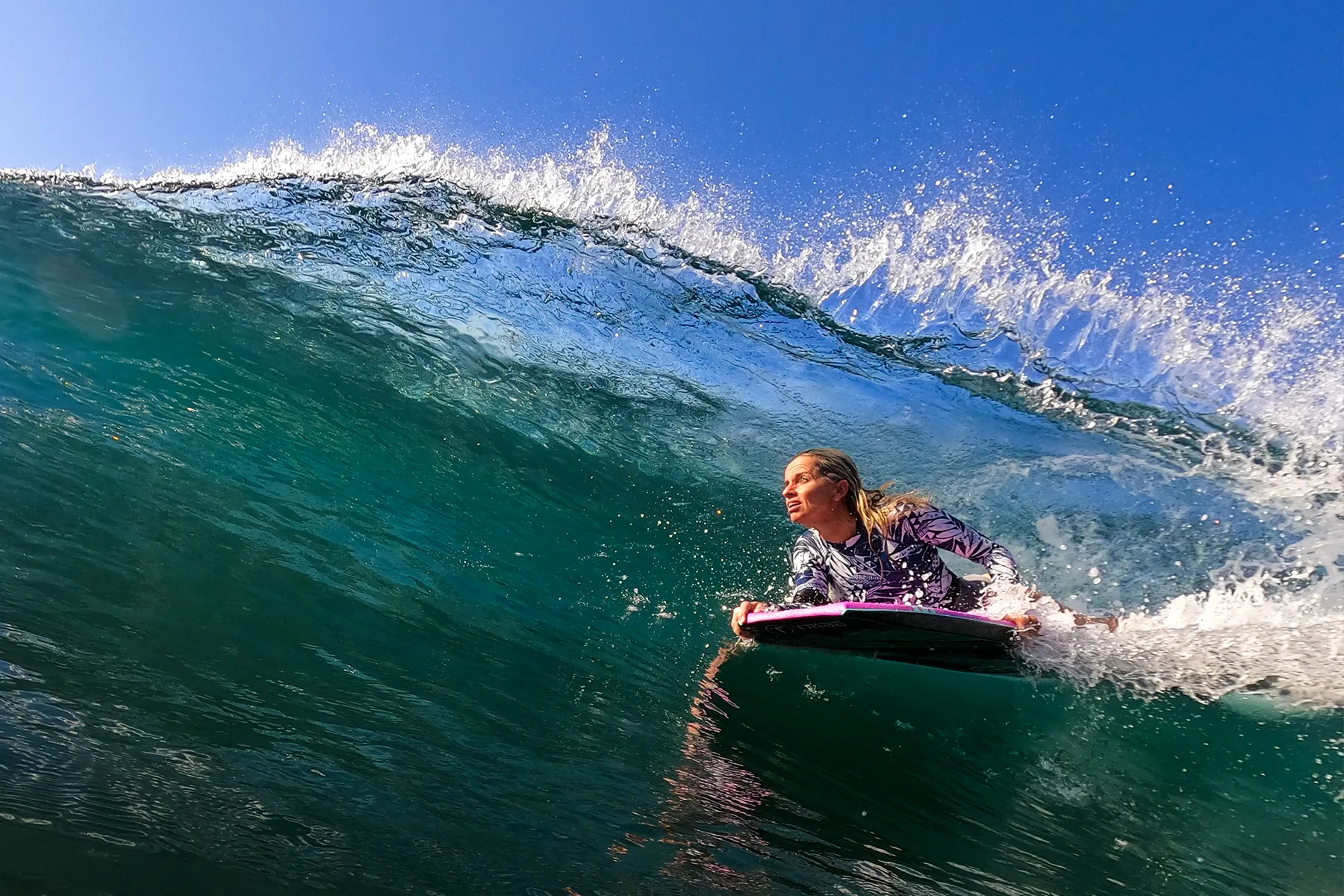
Women’s Bodyboard Retreat
From:
